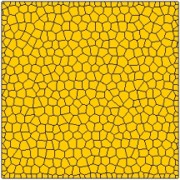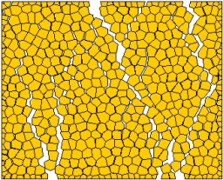
engineering & technology publications
ISSN 1759-3433
PROCEEDINGS OF THE SEVENTH INTERNATIONAL CONFERENCE ON COMPUTATIONAL STRUCTURES TECHNOLOGY
Masonry Micro-Modelling adopting a Discontinuous Framework
School of Engineering, University of Minho, Guimarães, Portugal
The results obtained using a non-linear continuous micro-model have been reported elsewhere, see [1], and will be only briefly reviewed here. In [1] it is shown that continuum micro-models largely overestimate the experimental strength of masonry prisms under uniaxial compression. Values ranging from 160 to 180% for the ratio between the predicted strength and the experimental strength were found.
|
Alternative modelling approaches seem, thus, to be needed. The present paper illustrates the recent advances in the research, regarding the application of discontinuous models to simulate the behaviour of masonry under compression. In the model used, a fictitious micro-structure is given to the units and mortar, composed by linear elastic polygons separated by non-linear interface elements, see Figure 1. The main results obtained and their critical discussion will be given in the paper.
- 1
- Pina-Henriques, J., Lourenço, P.B. Testing and modelling of masonry creep and damage in uniaxial compression. Proc. 8th STREMAH, pp.151-160, 2003.
purchase the full-text of this paper (price £20)
go to the previous paper
go to the next paper
return to the table of contents
return to the book description
purchase this book (price £135 +P&P)

